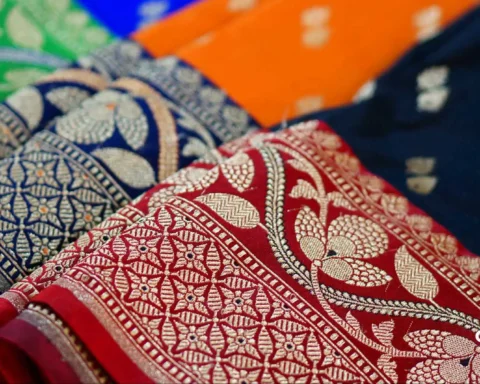The Hindu diaspora shows us a significant global phenomenon characterised by migration patterns, adaptation and the fast and steady preservation and evolution of religious and cultural identities.
This article discovers the origins, nature and adjustments made by overseas Hindus, discovering how they adapt to new environments while maintaining their traditions. The particular focus is on historical migration and the lasting impact on family structures and the transformation of religious beliefs, practices, proving the resilience and adaptability of the Hindu community globally.
Table of Contents
Patterns of Migration
Indian communities have a history of international migration patterns through ancient trade, missionary activities and pilgrimage. There was a significant shift that occurred in the 19th century because of the abolition of slavery in British colonies in 1833. This created a terrible labour shortage on plantations, making colonial governments, which included Britain, France, and the Netherlands, turn their heads to India for indentured and contract labourers.
Indentured labour, which is a quasi slavery system, came into light in 1834 and 1920, which involved 1.4 million people transported to 15 colonies, mostly to the West Indies, Fiji, Mauritius and South Africa. These labourers were mostly Hindus, largely originating from Eastern Uttar Pradesh, Bihar and some from South India. There was a mix of castes, untouchables, beggars, artisans, and a small number of brahmins. The economic desperation heightened this migration.
Contract labourers were offered paid two-way passages, indentured labourers were bound for five years, and they only did plantations and were subjected to physical punishment as well as harsh environments. Many were re-indentured often in exchange for Land or established themselves as artisans or traders upon completing their terms.
Leaving indentured servitude, other groups migrated on their own, including “passenger Indians” who were traders and professionals, mostly from Gujarat and Punjab, comprising Sikhs, Hindus, and Muslims. Post World War II, which saw a second important wave of migration primarily to Britain (1956- 1965), then the USA, Australia and Europe, because of the Industrial labour demands and job opportunities. A third wave occurred in the 1970s with a higher number of migrations of labourers and professionals to the Gulf countries.

Hindu Diaspora: Families
Migration gave immense stress to the Hindu families, which is a very close-knit institution deeply woven into a wider social network. Indentured Hindus were facing a severely skewed sex ratio where women were only one to four for every ten men. Many women who migrated were from vulnerable backgrounds, which led to huge numbers of exploitation, sexual harassment, and the traditional marital norms were broken down, which resulted in higher rates of wife beating and wife murder from regions like Trinidad, where 27 wife murders were recorded between 1859 and 1863.
When the indentured Hindus started settling, they made significant efforts to rebuild the traditional patriarchal family. This included restricting female education, promoting child marriages and suppressing female voices through social pressure, religious exhortations, and domestic violence, which was often allowed by colonial authorities.
The patriarchal family established itself in the West Indies, and it often did so with a concession to women, which took a couple of generations. But the “passenger Hindus” who migrated independently usually maintained traditional family structures, easily because of better financial stability, communal networks and the ability to travel with or be joined with other families.
Even though the overseas Hindu community restored their traditional structures, they still experience very high rates of domestic violence and female suicide, which are often linked to the challenges of accommodating women’s demand for equality and independence.
The joint family structure, even though weakened a bit, still remains strong, especially among the people of trading classes, serving economic interests and preserved through practices like family newsletters and shared living arrangements.

Religious Beliefs and Practices
Religion is a very important factor in Hindu migrant families. The challenges of Hinduism vary globally. In French colonies like Guadeloupe, Martinique, and Reunion, there were systematic policies of cultural assimilation, and religious conversions took place, which led many Hindus to convert to Christianity, though they often “Hinduised” Christianity by merging some of their rituals and deities. Reunion is experiencing a Hindu revival, which has led to growing Vaishnavite and Shaivite temples, which are increasing vegetarianism and the popularity of Brahmanic Hinduism.
Hindus in East Africa were prosperous and well organised, maintained a religious life and were largely Vaishnavite, emphasising devotionalism, self-discipline, and philanthropy. This rationalised Hinduism and integrated elements of folk Hinduism and reformist movements like the Arya Samaj and Divine Life Society.
In other regions like Fiji, South East Asia, South Africa and the West Indies, Hindu communities faced disintegration due to diverse castes, sects, and regional traditions. Brahmin priests were crucial for unifying these groups by popularising devotional and ritualistic Hinduism, particularly from texts like the Bhagavad Purana and Tulsidas’s Ramayana, making Bhojpuri Hindi the religious lingua franca. This emphasis on rituals (karmakanda) raised the priests’ power, as migrants often did not have Sanskrit knowledge or even proficiency in Hindi.
Despite this, many overseas Hindus, especially the educated and affluent, grew critical of ritualistic Hinduism and turned to reformist movements like Arya Samaj. Arya Samaj, which rejects castes, idol worship, and Brahmanical superiority, gained popularity among the diaspora, with 10-15% of overseas Hindus belonging to it, a higher percentage than in India. Other movements like the Ramakrishna Mission and Divine Life Society also found followers. Despite these adaptations, there is a lack of unique diasporic Hindu spiritual movements or leaders, suggesting a continued dependence on India for religious ideas.
Conclusion
The Hindu diaspora journey is a living proof of cultural resilience and strategic adaptation. From the hardships of indentured labourers to the establishment of well-to-do communities, Hindus overseas have continuously negotiated their identities and traditions. The problem faced by family structures due to forced migration and skewed gender ratios led to social restructuring, ultimately forcing patriarchal norms while also demanding greater female autonomy.
Simultaneously, religious practices progressed, sometimes assimilating with local cultures, at other times consolidating around devotional practices or embracing reformist movements. While maintaining strong ties to their Indian roots and spiritual sustenance from their homeland, the Hindu diaspora continues to navigate the problems of preserving heritage within diverse global contexts.

FAQs
What is the meaning of diaspora in Hinduism?
The Hindu diaspora refers to the global community of Hindus who have migrated from India and other South Asian countries to various parts of the world, establishing vibrant communities that maintain their cultural and religious practices.
What is meant by Indian Diaspora?
Indian Diaspora is a generic term used for addressing people who have migrated from the territories that are currently within the borders of the Republic of India.
Why is the Indian diaspora so powerful?
The Indian Diaspora is significant for several reasons: Economic contributions: Indian Diaspora members have started businesses, created jobs, and invested in their home countries. They have also contributed to India’s economy through remittances.









